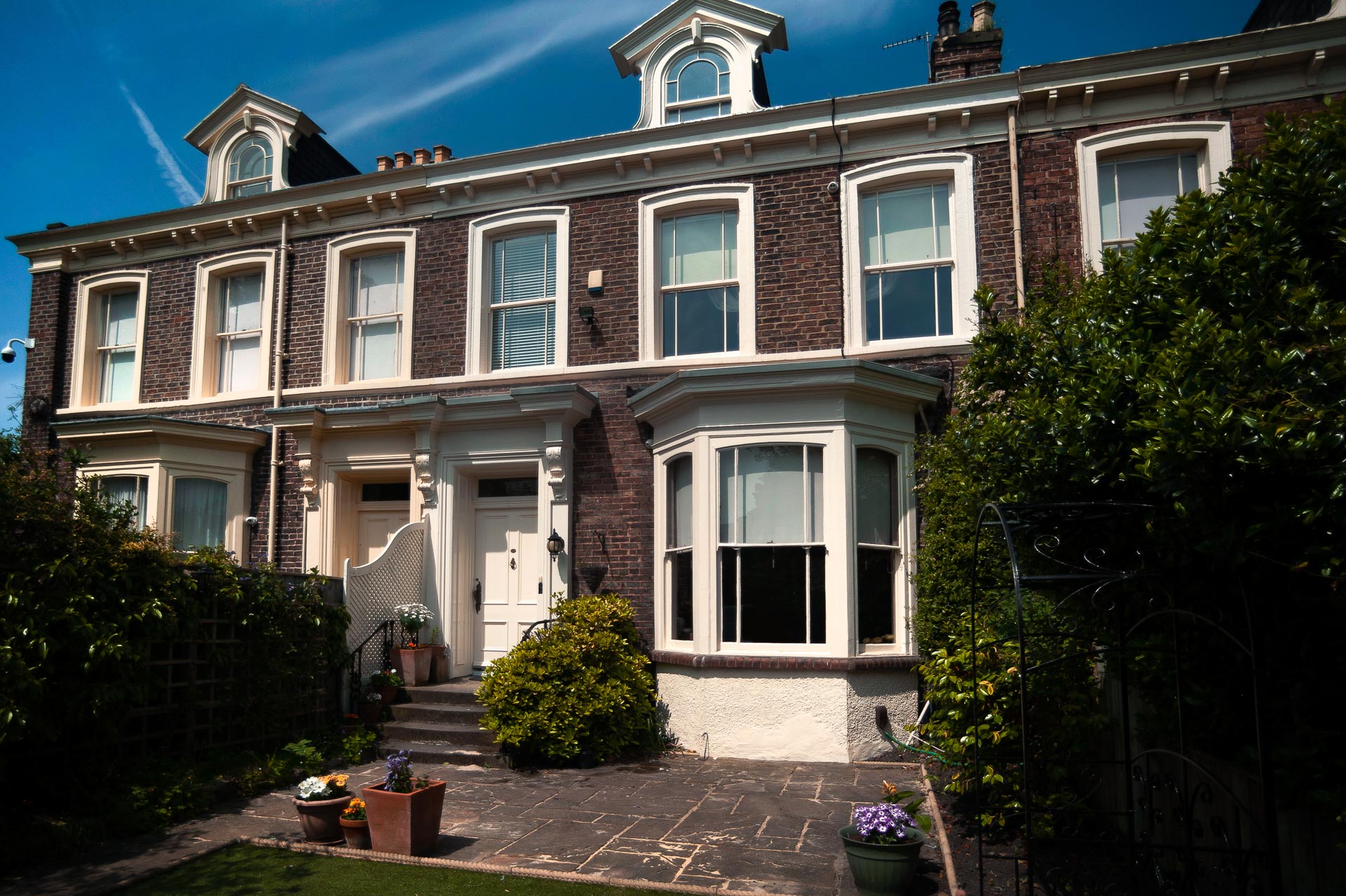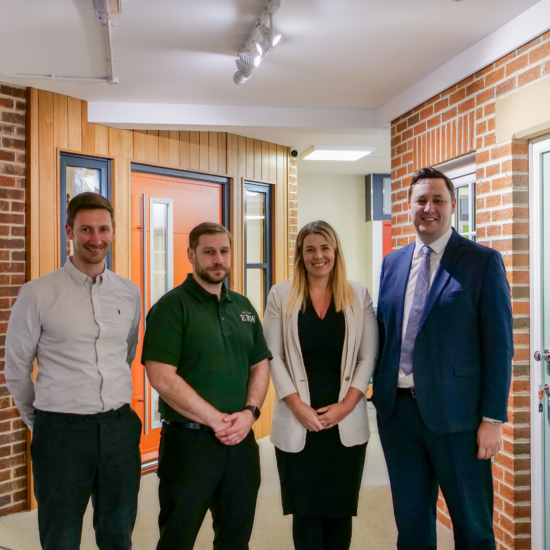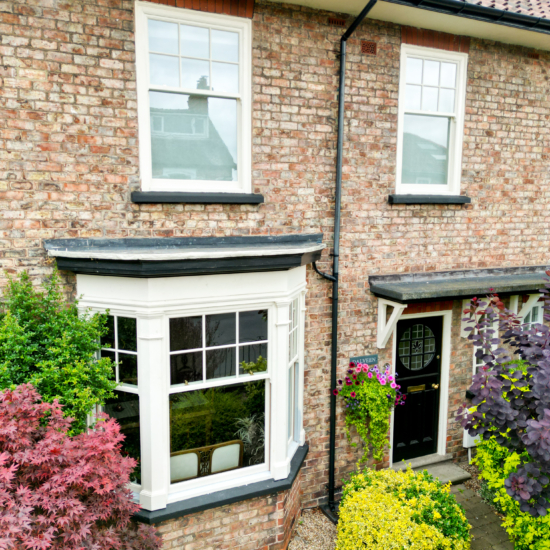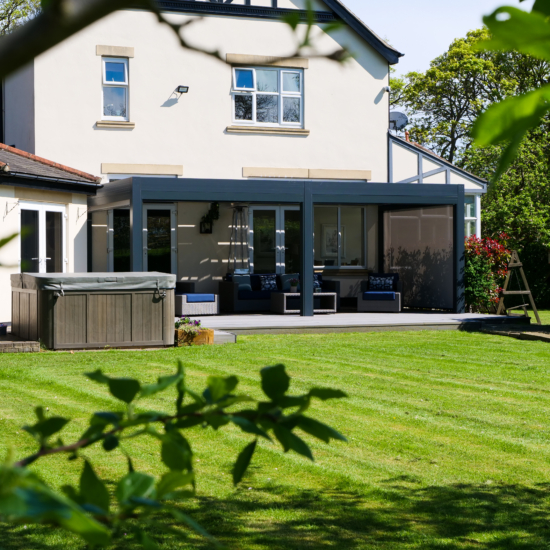- 01642 456167
- |
- info@erwltd.co.uk
- |
- Brochure
- |
- Blog
- |
- About
- |
- Colour Chart

This article was published on June 21, 2018
Built in around 1865, this beautiful terraced home was in need of new timber windows, after the existing windows had been painted shut by its previous owners. After carefully considering the historic architectural details of the original windows which were unique to the Grade II listed terrace of houses, and working with the local conservation officer to find a solution, ERW successfully repaired and replaced all of the windows in the property.
What was the client’s initial brief?
When the client bought the house the windows had been painted shut by its previous owners, so there was no means of ventilating many of the rooms. The customer fell in love with the character of the house when they bought it, but they needed to have the windows operational. After spending their first winter in the home, the customer had realised how cold and draughty the rooms were with the large single glazed windows – they wanted to improve the thermal efficiency by installing secondary glazing.
Many of the windows had also experienced rot and decay, so removing this was also a key aim for us and the client, while the feature arched window in the second floor gable had been repaired at some time in history and the original glazing bar detail had been lost. Unfortunately, this had resulted in the feature window looking very out of character with the rest of the houses in the street.
Did anything change within the brief once they met with ERW?
After consulting with the homeowners on many occasions, and identifying their needs and the best solution, we carried out a survey of the windows to determine the full condition. We suggested that the most appropriate way of improving the windows was to retain and renovate the existing box frames, and to manufacture and install bespoke energy saver sliding sashes which are constructed from timber, replicating the detailed moulding and features of the original sliding sashes, but designed and manufactured to accommodate the high performance double glazed insulating glass units.
We also suggested that the glazing bar detail to the second floor arched window could be reinstated. Finally we showed the client that we could also incorporate our easy paint system into the windows.
We encouraged the client to visit our workshop where we have a display of renovated sliding sash windows and we demonstrated how the renovated windows could be taken apart to allow the windows to be decorated from inside the house. This meant a huge saving on the cost of redecoration as it removed the need for expensive scaffold.
Was there a need for change?
The existing windows were not fit for purpose, and restricted the customer from enjoying their beautiful new home.
How did the building itself influence the design of the windows?
The architectural preservation of this stunning home was sensitively considered throughout the design process. The home is in a long terrace constructed, built in around 1865, which is an important part of the architectural history of Sunderland and the whole terrace is protected by virtue of Grade II listing.
As a result of this the customer could not consider replacing any of the windows, and due to the planning constraints, the local planning authority insisted that the original frames had to be retained and repaired wherever possible.
What products were used?
We were able to retain the majority of the original box frames and renovate the existing wood vertical sliding sash windows. We repaired the decayed timber and draught sealing of the box frames using specialist methods to ensure that they were fit for purpose, while retaining the aesthetics. We inserted new Redwood timber double glazed sliding sashes into the historic box frames, allowing for high performance energy efficient windows to be used in the historic building.
To ensure that the windows complemented the age and history of the building, we also added timber Georgian astragal bars, which were bonded to the internal and external surface of the glass, to replicate historic Georgian bar dimensions.
Tell us about the process of manufacturing the products.
In order to meet planning restrictions and ensure that we were able to retain the home’s welcoming period appeal in line with its Grade II listed status, we had to replicate the existing section details exactly, which called for detailed on site measurements and traditional carpentry methods used in the construction of the replacement energy saver sliding sash windows.
Were there any challenges throughout the project?
Due to the homes Grade II listed status, we worked closely with the local conservation officer to design a sympathetic solution to the property. Planning restrictions were also in place with the local planning office which meant that that original frames had to be retained and repaired wherever possible.
In order to provide the best solution to the customer, and the planning authorities, we arranged and attended various meetings with the relevant teams to discuss our proposals. We agreed in detail which elements of the windows could be retained and how we would replace the decayed sliding sashes. We showed the client and conservation officer samples of the proposed sashes and we were thrilled to have our proposals supported. We then went on to submit a formal application for Listed Building Consent and provided full technical drawings for approval, which were granted.
Were there any special or unique touches to the project?
As well as providing new energy efficient glazing, we had to carefully consider the historic architectural details of the original windows which were unique to the terrace of houses. The arched window to the 2nd floor gable was of particular historic interest due to architectural features and restoring these was an extremely important part of the project.
What was the outcome of the project?
The results of this project are fully operational windows which combine traditional style and tiber materials with modern manufacturing and all the benefits (and more!) of modern uPVC windows. The project was truly bespoke and required a lot of careful planning and research with various people. We were able to gain planning permission for the new windows, and successfully renovate and replace each window, including the restoration of the important historic architectural details in the 2nd floor gable window. Overall, the client is thrilled with the result and they can now enjoy their home with improved thermal performance and comfort levels. By installing our easy paint system into the windows, we have also saved the client money which would have been spent on maintenance in the future too.

ERW Joinery, a leader in the restoration of heritage properties, announces its important role in the revival of Middlesbrough Train Station, highlighted during a recent visit by Tees Valley Mayor, Ben Houchen. With over 40 years of expertise, ERW were appointed by Story Contracting to craft bespoke timber windows for the station. These windows, featuring […]

In today’s evolving property landscape, many homeowners face the pivotal question: to move or to improve? With the pressures of the cost-of-living crisis and increasing mortgage rates, the answer for many, leans towards renovation. Investing in home improvements, especially with timber windows and doors, could be a game-changer for your property. Replacing your windows and/or […]

When it comes to enhancing your outdoor living space, an aluminium pergola can be a fantastic addition to your garden. Since the pandemic in 2020, we’ve seen an increase in the pergolas’ popularity, with many people choosing these beautiful structures to enjoy their gardens all year round. Traditionally made from wood, the introduction of aluminium […]
We are delighted with the product supplied. The leaded windows look really good and very much in character with the house and with the previous windows. The installation team have been very helpful and informative throughout and are a credit to your company. An excellent job and done exactly as per your contract program (which makes a nice change from some of the builders we have used in the past!). Thank you.
Mr & Mrs D, Stockton on Tees
As in all things, there is no substitute for quality. Excellent product connected to a work ethos of ‘only being as good as your last job’ ensures continued quality of service, hopefully, to an ever expanding customer base.
My door is a visual ‘daily delight’. So pleased that I found my way to your factory door.
Mr Taylor, Billingham
I was delighted with the installation process. Steve and Tony worked very hard and took a lot of care around our house. My husband thought we would end up having to redecorate but was amazed that the windows looked like they had always been there. We are delighted and have had a number of positive comments about them. Thank you.
Mr & Mrs C, South Gosforth
All your staff are very friendly, polite & efficient. We are really please with our new windows (no draught & a lot quieter). They look very smart & in keeping with our old house.
Mr & Mrs B, Stokesley
Brochure Download
We're not able to carry out installations in your postcode area, however, we can still design and create your door, and you can liaise with a local fitter in your area to install it.
Close